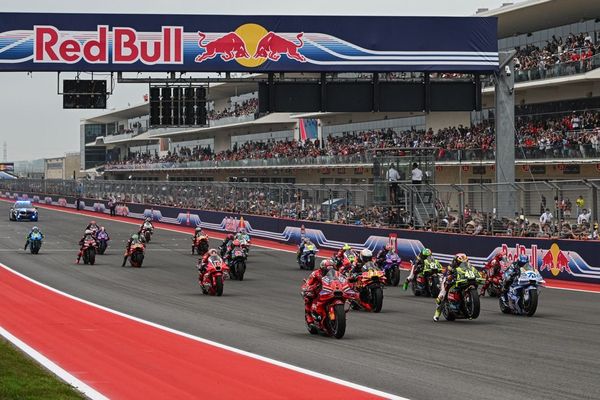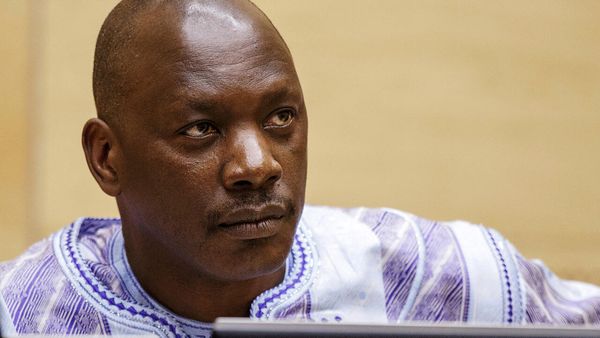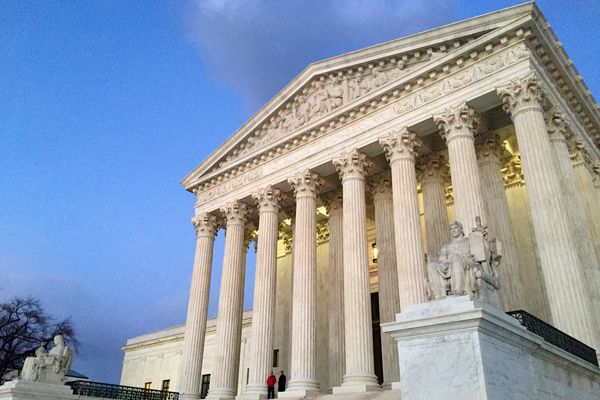
Small and crudely-formed, the hidden tunnel at Whiskey 108 almost went undetected.
Concealed under a pile of grass, it might never have been discovered save for the forensic attention of an Australian SAS boot.
But now that simple tunnel – and most critically, if anybody was found inside it – has emerged as a crucial inflection point upon which the defamation trial brought by Ben Roberts-Smith could turn.
Roberts-Smith, the recipient of Australia’s highest military honour, the Victoria Cross, is suing the Age, the Sydney Morning Herald and the Canberra Times for defamation over a series of reports he alleges portray him as committing war crimes, including murder. The newspapers are pleading a defence of truth. Roberts-Smith denies any wrongdoing.
For all the complexity of this case, a key question in its outcome will be a very simple one: were there any people inside the tunnel at Whiskey 108?
Two irreconcilable versions of events have emerged around that tunnel.
Roberts-Smith has repeatedly told the court the tunnel contained a cache of arms, but no people.
Four times during his evidence to court, Roberts-Smith has told Justice Anthony Besanko “there were no men in the tunnel”, or “there were no people in the tunnel”.
But so far this trial, five SAS soldiers – some still serving – have told the court they saw men pulled from the tunnel.
The presence of those men, or otherwise, is key because of what is alleged to have happened next.
The newspapers claim the two men pulled from the tunnel were later murdered: one, a disabled man with a prosthetic leg, was allegedly machine-gunned by Roberts-Smith himself, his leg later souvenired by another soldier as a ghoulish trophy of war, a drinking vessel for celebrating soldiers; the other, an elderly man, was allegedly executed by another soldier on Roberts-Smith’s orders, a “blooding” of a new trooper.
Roberts-Smith denies this ever happened, says it could never have happened, because there was never anybody in the tunnel.
Whiskey 108
Whiskey 108 was the name given by the SAS to a compound in the village of Kakarak, a known stronghold and arms base for Taliban insurgents on the western side of the Dorafshan River in Afghanistan’s southern Uruzgan province.

Australian SAS troops had been “outside the wire” in the province for several days before they received an order, late in the afternoon of 12 April 2009, to move on Whiskey 108. An airstrike was called in, a bomb dropped into the middle of the compound, and they fought their way through the river valley’s “green zone”, killing at least two insurgents en route, to the perimeter of the mud-walled compound.
After the fight-through to secure the compound – which passed without significant incident – the patrol commanders gathered in a courtyard, amid the rubble of the bombed-out compound, to plan the next phase of the operation.
It was then that one soldier, moving a pile of grass to check what lay beneath, discovered the entrance to a tiny tunnel.
Straight away, the Australian soldiers had their guns trained down the hole.
It is here that the versions of events described to the court diverge, and part irreconcilably.
The testimony from six SAS soldiers has focused on what happened next at Whiskey 108. Five soldiers have said they saw people emerge from the tunnel, one has said he saw two Afghan men in the custody of Australian troops next to the tunnel entrance.
The soldiers’ testimonies
The soldiers’ testimonies have not been identical.
In some versions of events, Australian troops called themselves for anyone in the tunnel to surrender and come out, in others, the message was relayed through an interpreter, assisted by two Afghan women who had been detained in the compound.
One soldier has told the court he put his head and shoulders inside the tunnel and saw two men inside.
Another soldier, Person 43, said while he recalled there were two “persons under control” found at Whiskey 108, he had recollections he helped only one come out of the tunnel. He told the court he knelt down beside the tunnel to help drag the unarmed man out. “He started to stand up and I reached down and pulled him out.
“He wasn’t resisting,” Person 43 said, “his hands were up in the universal ‘I give up’ position.”

Another serving soldier, Person 40, said he watched two men emerge.
“They were obviously very frightened. One had a distinctive limp … immediately [upon] coming out of his tunnel he was lifting his trousers, pointing to his prosthetic leg, expecting some sympathy from the troops.”
Person 40 said both men, whom he believed were Taliban, were searched, “and from there they were marched off to another area, by Roberts-Smith and Person 35 [another Australian soldier]”.
“My understanding is that they would be TQed (tactically questioned), and Ben Roberts-Smith was the lead TQer on the ground.”
Person 40 said he expected the men to be taken back to the Australians’ Tarin Kowt base: “That’s the SOP (standard operating procedure).”
However, Person 40 told the court no prisoners were taken back to Tarin Kowt from that mission. He never saw the men alive again.
The elderly man
One soldier, anonymised as Person 41, gave evidence to the court about an alleged execution at Whiskey 108.
He told the court he was investigating a room inside the compound where he had discovered bomb-making materials and opium when he emerged into a courtyard to see Roberts-Smith and another soldier, known as Person 4, standing above a kneeling elderly Afghan male, near the entrance to a tunnel.
Person 41 said: “RS [Roberts-Smith] walked down and grabbed the Afghan male by the scruff of his shirt.”
He said Roberts-Smith walked the man about two metres until he was in front of Person 4, “then kicked him in the back of the legs behind the knees until he was kneeling down … RS pointed to the Afghan and said to Person 4 ‘shoot him’.”
Person 41 said he did not want to witness what he realised was about to occur, and stepped back into the room where he had previously been. He said he heard a muffled round fired from an M4 rifle – “I’ve fired thousands of those rounds and I know what they sound like”. He waited another “15 or so seconds” before stepping back into the courtyard.
He said Roberts-Smith was no longer in the courtyard, but Person 4 was standing above the Afghan male, who was dead from a single bullet wound to the head.
He inspected the body. “There was quite a lot of blood flowing from the head wound.”
The two Australian soldiers did not speak.
“He seemed to be in a bit of shock to me.”
Person 4, subpoenaed as a witness by the newspapers, spent nearly a week in the witness box during this trial.
While he gave evidence about other SAS missions he participated in, Person 4 objected to answering questions about his actions at Whiskey 108: “I object on grounds of self-incrimination,” he told the court. After intense legal debate over whether he should be compelled to respond, the judge ruled he did not have to answer.
The man with the prosthetic leg
Person 41 also gave evidence about standing in a cordon outside the Whiskey 108 compound following the Australian fight-through, telling the court, as he stood guard, he saw Roberts-Smith “frog-marching” an Afghan man “by the scruff of his neck” away from the compound entrance.
“He [Roberts-Smith] had his machine gun in his right arm … he then proceeded to throw the Afghan male down onto the ground. The Afghan male landed on his back. ‘RS’ then reached down and grabbed him by the shoulder and flipped him onto his stomach. Then I observed him lower his machine gun and shoot approximately three to five rounds into the back of the Afghan male.”
“After he’d done that, he looked up and saw me standing there, and looked at me and said ‘are we all cool, we good?’. I just replied, ‘yeah mate, no worries’.”
Another soldier was also in the cordon surrounding the compound. Person 14 said the light was fading when he heard heavy footsteps to his right.
“As I turned my head to my right, there were three Australian soldiers and a black object, which was similar to a human, that was thrown to the ground.”
Person 14 said the person made a thudding, “expulsion of air” noise as they hit the ground.
“Then a soldier raised their Minimi F89 Para and fired an extended burst. It was loud, like a ‘BRRRRRT’ for one second.”
“That person turned and walked away out of sight back into Whiskey 108.”
Person 14 said he turned to his patrol’s second-in-command and said “what the hell what that?” He said he did not recognise the soldier who fired at the time.
But Person 14 said the soldier who shot the man was wearing a distinctive new camouflage paint, worn only by one SAS patrol in action that day, the five-man team of which Roberts-Smith was a member.
Person 14 later checked the body of the slain man – he had gunshot wounds to the centre of his torso and blood coming from his mouth and nose. Person 14 saw that the man had a prosthetic leg.
Later in the day, Person 14 told the court he saw Roberts-Smith carrying the distinctive Minimi weapon at the troops’ lay-up point.
“I saw who had the Para Minimi [machine gun],” he said. “It was Ben Roberts-Smith.”
There were no men in the tunnel
Roberts-Smith has been resolute in his evidence.
In June last year, under cross-examination, he was repeatedly asked about what happened at Whiskey 108. Four times he told the court “there were no men in the tunnel” or “there were no people in the tunnel”.
He said testimony that men were pulled from the tunnel was “completely false”.
It is not disputed Roberts-Smith shot and killed the man with the prosthetic leg.
Roberts-Smith told the court he killed the man because he was a threat to Australian troops. Roberts-Smith said he saw him, armed and running, and killed him in accordance with troops’ rules of engagement.
Roberts-Smith told the court he was standing outside the compound when he saw the man, “not running directly at me, but coming on an arc”.
“He had his hand over the top of the weapon, because he was carrying it down next to his body like that … hunched over, as in, running like that with his shoulders down.”
Roberts-Smith said the other man killed at Whiskey 108 was also an insurgent, also armed, and killed in combat by another Australian soldier.
Roberts-Smith said after he had killed the man with a prosthetic leg he had a weapons stoppage, as he was kneeling to fix it, another SAS soldier shot and killed the second man.
“My assumption was it was someone in my team, so either Person 18 or Person 4 was my assumption, but I actually don’t know.”
Under cross-examination, he was asked “this is a person who, on your account, saved your life?
“Yes,” Roberts-Smith replied, but said, to this day, he does not know which soldier it was.
In the witness box, Person 18 denied being involved in a firefight at Whiskey 108. Person 4 was not questioned on his actions at Whiskey 108.
Under cross-examination, the SAS witnesses who have been questioned over Whiskey 108 over the past fortnight have been asked whether their memories of the mission are hazy or faulty, whether they have conflated Whiskey 108 with other operations, or whether their stories were confected out of malice to harm Roberts-Smith. They have denied those assertions, and reaffirmed their evidence.
Trial has weeks to go
This trial has weeks left still to run. The newspapers are only partway through their witnesses. Roberts-Smith may call up to 20 witnesses-in-reply. He may even take the stand again himself in order to rebut some of the allegations against him, though he has already given his version of events at Whiskey 108.
For all of the vast sweep of this mammoth trial, a simple tunnel dug into the soil of Afghanistan could prove critical: was there anyone inside?







